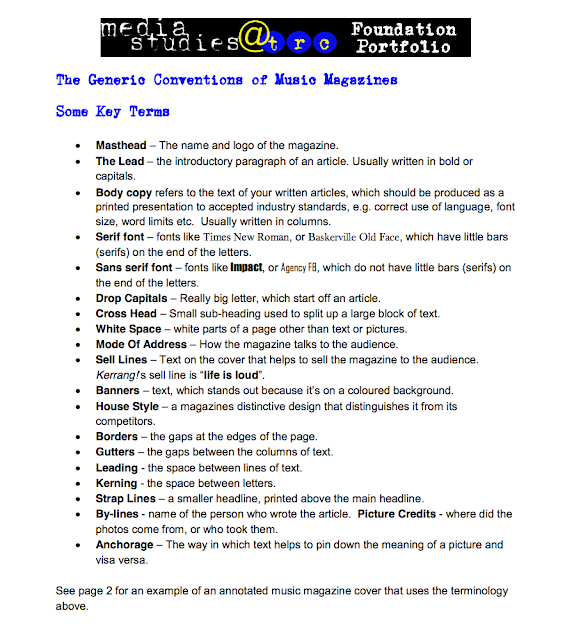Cover Photo
For my front cover, I have a few ideas as to what I think my readers will want to see on the front of my magazine. I will organise a day where I can go and photograph my friends band at their practice area.
I know what kind of image I want as the front cover and how it will be presented.
With 5 people in the band, I have decided to go with the generic pose and put the front man centre and the other members stood slightly behind and to the side of the front man. I will not be using any make-up as I don't think the boys need to wear make-up for the shoot.
Here is an example for how I want the band members to stand:
This is one of my ideas for the stance of the band members. The reason I would like them to stand like this is because you can see all members, even though the focus is slightly more on the frontman (Josh Franceschi), the other band members are still clearly seen. This created a sense of togetherness, and the fans will not be disappointed that it is all focused on the frontman.
Here is another example of a cover photo:
This is the cover for one of Metallica's albums (Garage Inc.) However, this image does not follow the norm. Most bands seem to focus on the frontman, whereas in this image it is actually the bass player (Jason Newsted) that is the main focal point. Yes, the other band members are in the picture, they just aren't as forward as Jason is in this image.
In comparison, here is another photo of Metallica for another album:
In this image, all of the band members are the focal point instead of just one. However, instead of following the norm, the frontman (James Hetfield) is off to the side of the image, instead of in the centre. I will be using all of these images when taking my final cover photo.
This is the cover for one of Metallica's albums (Garage Inc.) However, this image does not follow the norm. Most bands seem to focus on the frontman, whereas in this image it is actually the bass player (Jason Newsted) that is the main focal point. Yes, the other band members are in the picture, they just aren't as forward as Jason is in this image.
In comparison, here is another photo of Metallica for another album:
In this image, all of the band members are the focal point instead of just one. However, instead of following the norm, the frontman (James Hetfield) is off to the side of the image, instead of in the centre. I will be using all of these images when taking my final cover photo.



























